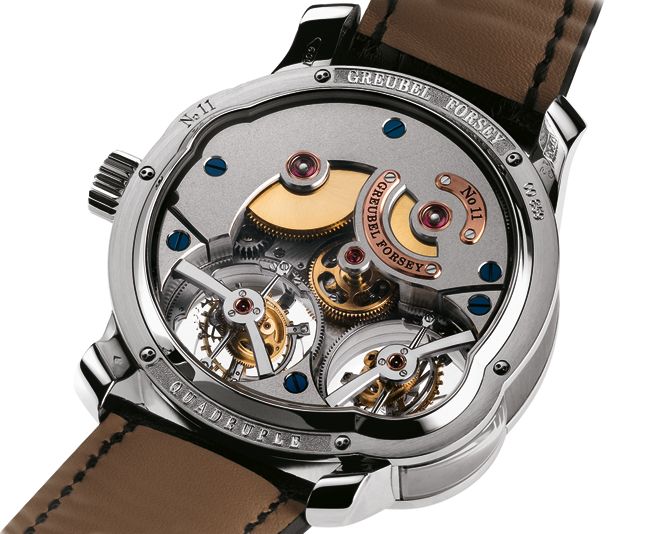Mechanical watch
Most of the 500 year history of watches consisted of the development of the mechanical watch. Watches evolved from portable spring driven clocks, which first appeared in 15th-century Europe.
Portable timepieces were made possible by the invention of the mainspring in the early 15th century. Nuremberg clockmaker Peter Hele (1485-1542) is often credited as the inventor of the watch.
He was one of the first German craftsman who made "clock-watches" ornamental timepieces worn as pendants, which were the first timepieces to be worn on the body. His fame is based on a passage by Johann Cochlaus in 1511
A mechanical watch is a watch that uses a mechanism to measure the passage of time, as opposed to modern quartz watches which function electronically. It is driven by a spring (called a mainspring) which must be wound periodically. Its force is transmitted through a series of gears to power the balance wheel, a weighted wheel which oscillates back and forth at a constant rate. A device called an escapement releases the watch's wheels to move forward a small amount with each swing of the balance wheel, moving the watch's hands forward at a constant rate. This makes the 'ticking' sound characteristic of all mechanical watches. Mechanical watches evolved in Europe in the 17th century from spring powered clocks, which appeared in the 15th century.

Mechanism of the watch
A mechanical watch is a watch that uses a mechanical mechanism to measure the passage of time, as opposed to modern quartz watches which function electronically. It is driven by a spring (called a mainspring) which must be wound periodically.
Its force is transmitted through a series of gears to power the balance wheel, a weighted wheel which oscillates back and forth at a constant rate. A device called an escapement releases the watch's wheels to move forward a small amount with each swing of the balance wheel, moving the watch's hands forward at a constant rate.
This makes the 'ticking' sound characteristic of all mechanical watches.
The internal mechanism of a watch, excluding the face and hands, is called the movement. All mechanical watches have these five parts:
A mainspring, which stores mechanical energy to power the watch.
A gear train, called the going train, which has the dual function of transmitting the force of the mainspring to the balance wheel and adding up the swings of the balance wheel to get units of seconds, minutes, and hours. A separate part of the gear train, called the keyless work, allows the user to wind the mainspring and enables the hands to be moved to set the time.
A balance wheel, which oscillates back and forth. Each swing of the balance wheel takes precisely the same amount of time. This is the timekeeping element in the watch.
An escapement mechanism, which has the dual function of keeping the balance wheel vibrating by giving it a push with each swing, and allowing the watch's gears to advance or 'escape' by a set amount with each swing. The periodic stopping of the gear train by the escapement makes the 'ticking' sound of the mechanical watch.
An indicating dial, usually a traditional clock face with rotating hands, to display the time in human-readable form.
Additional functions on a watch besides the basic timekeeping ones are traditionally called complications. Mechanical watches may have these complications:
Automatic winding or self-winding—in order to eliminate the need to wind the watch, this device winds the watch's mainspring automatically using the natural motions of the wrist, with a rotating-weight mechanism.
Este Post ha recibido un Upvote desde la cuenta del King: @dineroconopcion, El cual es un Grupo de Soporte mantenido por 5 personas mas que quieren ayudarte a llegar hacer un Top Autor En Steemit sin tener que invertir en Steem Power. Te Gustaria Ser Parte De Este Projecto?
This Post has been Upvote from the King's Account: @dineroconopcion, It's a Support Group by 5 other people that want to help you be a Top Steemit Author without having to invest into Steem Power. Would You Like To Be Part of this Project?